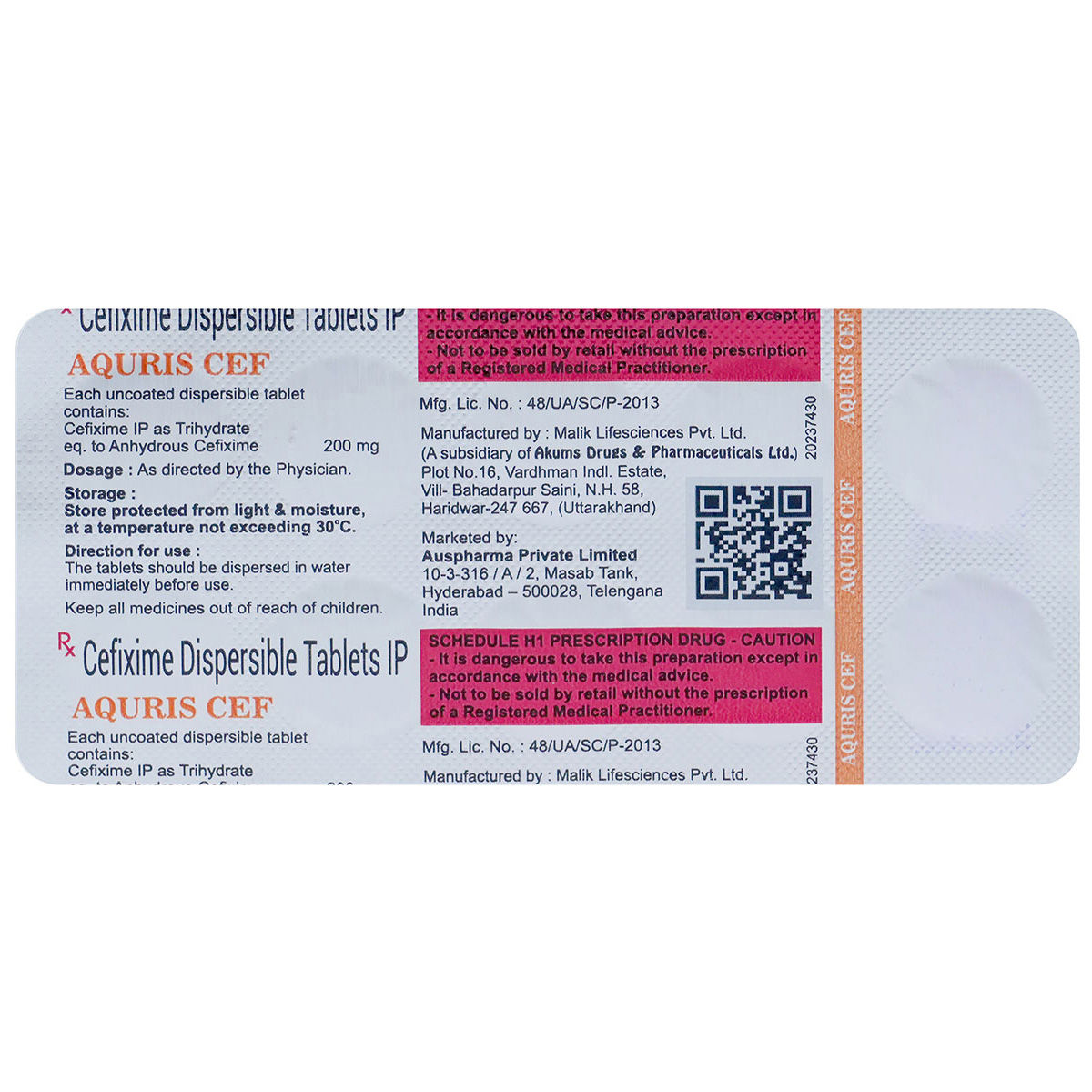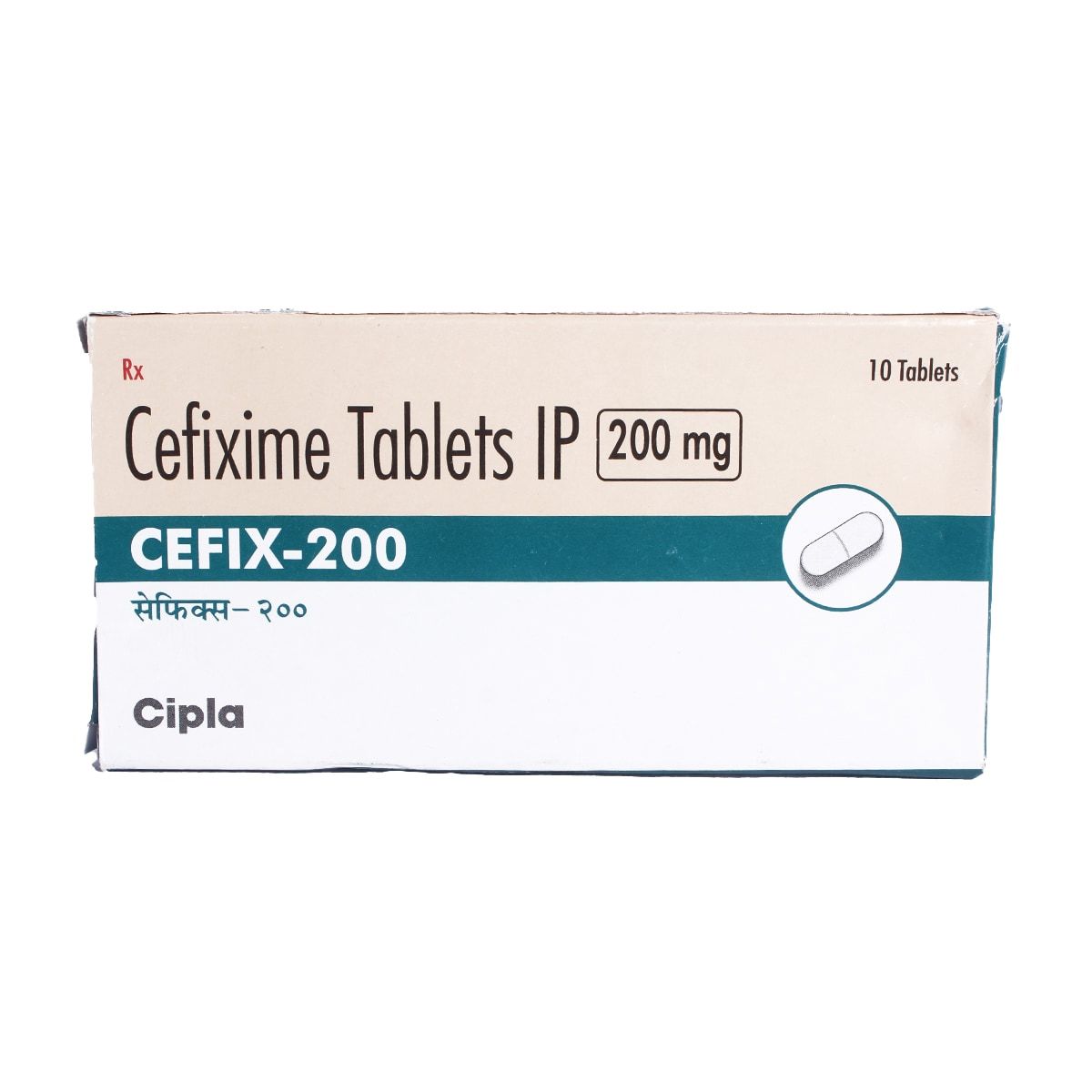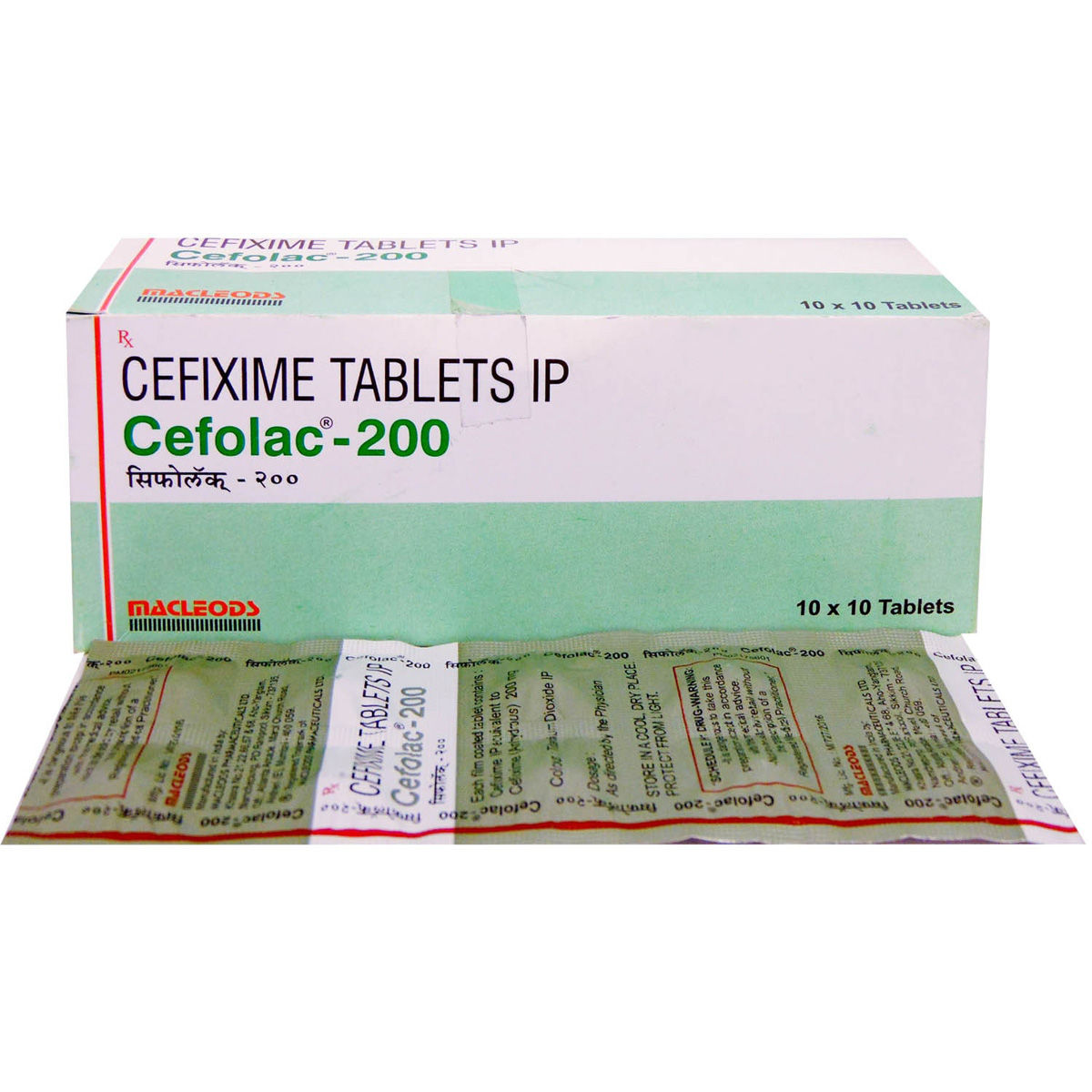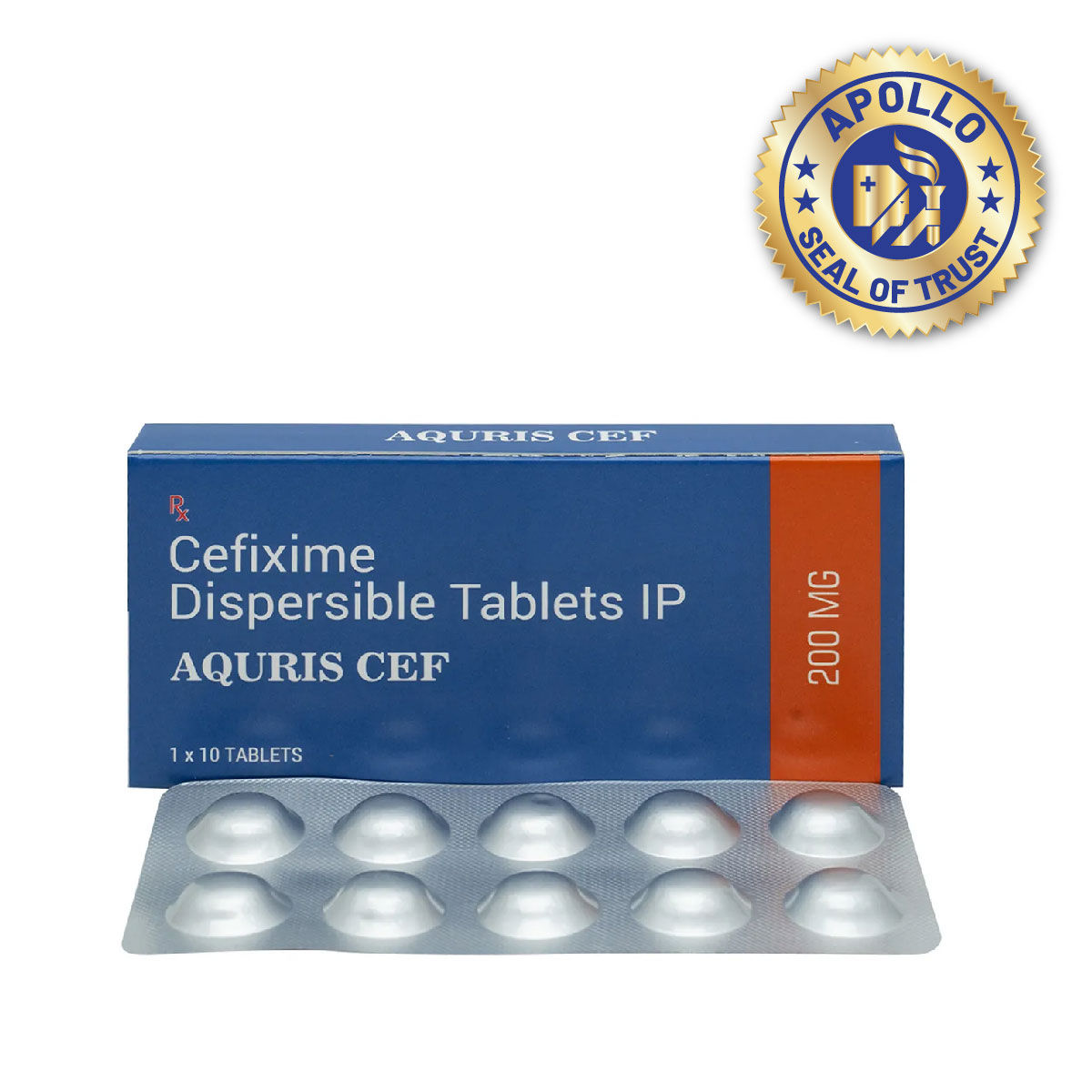Taxim-O 200 Tablet 10's





₹98.1*
MRP ₹109
10% off
₹92.65*
MRP ₹109
15% CB
₹16.35 cashback(15%)
Free Delivery
With Circle membership
(Inclusive of all Taxes)
This offer price is valid on orders above ₹800. Apply coupon PHARMA10/PHARMA18 (excluding restricted items)
Taxim-O 200 Tablet is used to treat bacterial infections of the ear, nose, sinuses (sinusitis), throat (tonsillitis, pharyngitis), chest and lungs (bronchitis, pneumonia) and urinary system (cystitis and kidney infections). Additionally, it is also prescribed to treat uncomplicated gonorrhoea (cervical/urethral). It contains Cefixime, which weakens and destroys the bacterial cell wall, leading to death. As a result, it helps to treat bacterial infections. Sometimes, you may experience common side effects such as diarrhoea, nausea, loose stools, abdominal pain, dyspepsia, indigestion, and vomiting. Before taking this medicine, you should tell your doctor if you are allergic to any of its components or if you are pregnant/breastfeeding, and about all the medications you are taking and pre-existing medical conditions.
Know Your Delivery Time
Provide Delivery Location
Available Offers
 Prescription drug
Prescription drugWhats That
 286 people bought
286 people bought 
Secure Payment

India's Most Trusted Pharmacy

Genuine Products
Composition :
Manufacturer/Marketer :
Consume Type :
Return Policy :
Expires on or after :
About Taxim-O 200 Tablet
Taxim-O 200 Tablet is used to treat susceptible organisms (bacteria)-caused infections of the ear, nose, sinuses (sinusitis), throat (tonsillitis, pharyngitis), chest and lungs (bronchitis, pneumonia) and urinary system (cystitis and kidney infections). Additionally, it is also prescribed to treat uncomplicated gonorrhoea (cervical/urethral).
Taxim-O 200 Tablet contains Cefixime, which works by inhibiting cell wall synthesis. In turn, Taxim-O 200 Tablet weakens and destroys the bacterial cell wall, leading to death. As a result, Taxim-O 200 Tablet helps to treat bacterial infections.
Take Taxim-O 200 Tablet as directed by the physician. Sometimes, you may experience common side effects such as diarrhoea, nausea, loose stools, abdominal pain, dyspepsia, indigestion, and vomiting. Most of these side effects do not require medical attention and resolve gradually over time. However, you are advised to talk to your doctor if you experience these side effects persistently.
Do not take Taxim-O 200 Tablet if you are allergic to cefixime, other cephalosporin antibiotics, or any other ingredients of this medicine. Before starting the Taxim-O 200 Tablet , please inform your doctor if you have colitis (inflammation of the colon's inner lining), renal dysfunction, liver disease, and seizure disorders. Do not take this medicine on your own as self-medication may lead to antibiotic resistance in which antibiotics fail to act against specific bacterial infections. If you are pregnant or breastfeeding, think you may be pregnant, or are planning to have a baby, ask your doctor for advice before taking the Taxim-O 200 Tablet . Drive only if you are alert, as Taxim-O 200 Tablet may cause dizziness.
Uses of Taxim-O 200 Tablet
•Treatment of Bacterial Infections: Taxim-O 200 Tablet is widely used to combat bacterial infections such as respiratory tract infections, and urinary tract infections. It functions by inhibiting bacterial growth, aiding recovery.
•Management of Otitis Media: Taxim-O 200 Tablet may be prescribed for otitis media, a middle ear infection common in children, to alleviate pain and discomfort associated with the condition.
•Treatment of Sinusitis: Taxim-O 200 Tablet proves effective in treating sinusitis, which involves inflammation of the sinus cavities caused by bacterial infections. It helps relieve symptoms such as nasal congestion and pressure.
•Gonorrhea Treatment: Sometimes, Taxim-O 200 Tablet is used to treat gonorrhea, a sexually transmitted infection caused by the Neisseria gonorrhoeae bacteria. This use is usually a part of a dual therapy approach.
Directions for Use
Tablet/capsule: Swallow it as a whole with water; do not crush, break or chew it. Dispersible Tablet: Check the label for directions before use. Disperse the tablet in the prescribed amount of water and swallow the contents. Do not crush, chew or swallow as a whole. Powder/granules: Check the label for directions before use. Mix the powder/granules in water, mix well and drink immediately.
Medicinal Benefits
Taxim-O 200 Tablet is a short-term medication for a wide range of bacterial infections. It prevents the growth of bacteria by stopping the formation of a protective covering, which is vital for its growth. It prevents and treats bacterial infections like ear, nose, sinuses (sinusitis), throat (tonsillitis, pharyngitis), chest and lungs (bronchitis, pneumonia) and urinary system (cystitis and kidney infections). Additionally, it is also prescribed to treat uncomplicated gonorrhoea (cervical/urethral).
How Taxim-O 200 Tablet Works
Storage
- Preventing Vomiting (Before it Happens)
- Take medication exactly as prescribed by your doctor. This can help minimize side effects, including vomiting.
- Having a small meal before taking your medication can help reduce nausea and vomiting.
- Talk to your doctor about taking anti-nausea medication along with your prescribed medication.
- Managing Vomiting (If it Happens)
- Try taking ginger in the form of tea, ale, or candy to help alleviate nausea and vomiting.
- What to Do if Vomiting Persists
- Consult your doctor if vomiting continues or worsens, consult the doctor for guidance on adjusting your medication or additional treatment.
- Inform Your Doctor: Notify your doctor immediately about your diarrhoea symptoms. This allows them to adjust your medication or provide guidance on managing side effects.
- Stay Hydrated: Drink plenty of fluids to replace lost water and electrolytes. Choose water, clear broth, and electrolyte-rich drinks. Avoid carbonated or caffeinated beverages to effectively rehydrate your body.
- Follow a Bland Diet: Eat easy-to-digest foods to help firm up your stool and settle your stomach. Try incorporating bananas, rice, applesauce, toast, plain crackers, and boiled vegetables into your diet.
- Avoid Trigger Foods: Steer clear of foods that can worsen diarrhoea, such as spicy, fatty, or greasy foods, high-fibre foods, and dairy products (especially if you're lactose intolerant).
- Practice Good Hygiene: Maintain good hygiene to prevent the spread of infection. To stay healthy, wash your hands frequently, clean and disinfect surfaces regularly, and avoid exchanging personal belongings with others.
- Take Anti-Diarrheal Medications: If your doctor advises, anti-diarrheal medications such as loperamide might help manage diarrhoea symptoms. Always follow your doctor's directions.
- Keep track of your diarrhoea symptoms. If they don't get better or worse or are accompanied by severe stomach pain, blood, or dehydration signs (like extreme thirst or dark urine), seek medical help.
- Inform your doctor about the nausea and discuss possible alternatives to the medication or adjustments to the dosage.
- Divide your daily food intake into smaller, more frequent meals to reduce nausea.
- Opt for bland, easily digestible foods like crackers, toast, plain rice, bananas, and applesauce.
- Avoid certain foods that can trigger nausea, such as fatty, greasy, spicy, and smelly foods.
- Drink plenty of fluids, such as water, clear broth, or electrolyte-rich beverages like coconut water or sports drinks.
- Use ginger (tea, ale, or candies) to help relieve nausea.
- Get adequate rest and also avoid strenuous activities that can worsen nausea.
- Talk to your doctor about taking anti-nausea medication if your nausea is severe.
- Record when your nausea occurs, what triggers it, and what provides relief to help you identify patterns and manage your symptoms more effectively.
- Inform Your Doctor: Notify your doctor immediately about your diarrhoea symptoms. This allows them to adjust your medication or provide guidance on managing side effects.
- Stay Hydrated: Drink plenty of fluids to replace lost water and electrolytes. Choose water, clear broth, and electrolyte-rich drinks. Avoid carbonated or caffeinated beverages to effectively rehydrate your body.
- Follow a Bland Diet: Eat easy-to-digest foods to help firm up your stool and settle your stomach. Try incorporating bananas, rice, applesauce, toast, plain crackers, and boiled vegetables into your diet.
- Avoid Trigger Foods: Steer clear of foods that can worsen diarrhoea, such as spicy, fatty, or greasy foods, high-fibre foods, and dairy products (especially if you're lactose intolerant).
- Practice Good Hygiene: Maintain good hygiene to prevent the spread of infection. To stay healthy, wash your hands frequently, clean and disinfect surfaces regularly, and avoid exchanging personal belongings with others.
- Take Anti-Diarrheal Medications: If your doctor advises, anti-diarrheal medications such as loperamide might help manage diarrhoea symptoms. Always follow your doctor's directions.
- Keep track of your diarrhoea symptoms. If they don't get better or worse or are accompanied by severe stomach pain, blood, or dehydration signs (like extreme thirst or dark urine), seek medical help.
- Drink water or other clear fluids.
- To prevent worsening of pain, limit intake of tea, coffee, or alcohol.
- Include bland foods like rice, toast, crackers, and rice in your diet.
- Avoid lying down immediately after eating as it may cause indigestion or heartburn.
- Avoid acidic and spicy food as it may cause indigestion.
- Take medications with food (if recommended): It can help prevent stomach distress and indigestion.
- Eat smaller, more frequent meals: Divide daily food intake into smaller, more frequent meals to ease digestion.
- Avoid trigger foods: Identify and avoid foods that trigger indigestion, such as spicy, fatty, or acidic foods.
- Stay upright after eating: Sit or stand upright for at least 1-2 hours after eating to prevent stomach acid from flowing into the oesophagus.
- Avoid carbonated drinks: Avoid drinking carbonated beverages, such as soda or beer, which can worsen indigestion.
- Manage stress: To alleviate indigestion, engage in stress-reducing activities like deep breathing exercises or meditation.
- Consult a doctor if needed: If indigestion worsens or persists, consult a healthcare professional to adjust the medication regimen or explore alternative treatments.
- Hydrate your body: Drink enough water to prevent dehydration and headaches.
- Calm Your Mind: Deep breathing and meditation can help you relax and relieve stress.
- Rest and Recharge: Sleep for 7-8 hours to reduce headache triggers.
- Take rest: lie down in a quiet, dark environment.
- Cold or warm compresses can help reduce tension.
- Stay Upright: Maintain good posture to keep symptoms from getting worse.
- To treat headaches naturally, try acupuncture or massage therapy.
- Over-the-counter pain relievers include acetaminophen and ibuprofen.
- Prescription Assistance: Speak with your doctor about more substantial drug alternatives.
- Severe Headaches: Seek emergency medical assistance for sudden, severe headaches.
- Frequent Headaches: If you get reoccurring headaches, consult your doctor.
- Headaches with Symptoms: Seek medical attention if your headaches include fever, disorientation, or weakness.
What if I have taken an overdose of Taxim-O 200 Tablet
Drug Warnings
Taxim-O 200 Tablet has occasionally been associated with hypersensitive reactions that result in shock and mortality. If a reaction happens, stop using it. Do not take Taxim-O 200 Tablet if you are allergic to Cefixime or other cephalosporin antibiotics, or any of the other ingredients of this medicine. Talk to the doctor before taking Taxim-O 200 Tablet if you have seizures, liver or renal dysfunction, heart disorder, and inflammation of the colon's inner lining (colitis). Do not take Taxim-O 200 Tablet without first consulting the doctor if you are pregnant, planning for pregnancy or breastfeeding. Drive only if you are alert as Taxim-O 200 Tablet may cause dizziness. Taxim-O 200 Tablet may interact with certain tests such as glucose (sugar) in urine and give unusual results. Therefore, inform the doctor that you are using Taxim-O 200 Tablet before undergoing any tests.
Drug-Drug Interactions
Drug-Drug Interactions
Login/Sign Up
Co-administration of Taxim-O 200 Tablet with Cholera vaccine may reduce the effectiveness of the vaccine.
How to manage the interaction:
Talk to your doctor before receiving the cholera vaccine if you are currently being treated with Taxim-O 200 Tablet or have been treated within the last 14 days. To ensure adequate vaccine response, you should not receive cholera vaccine until at least 14 days after you complete your antibiotic therapy. Do not discontinue the medication without consulting a doctor.
Drug-Food Interactions
Drug-Food Interactions
Login/Sign Up
Diet & Lifestyle Advise
After taking the full course of Taxim-O 200 Tablet , probiotics should be taken to restore some of the healthy bacteria in the intestines that may have been killed. Taking probiotics after antibiotic treatment can reduce the risk of antibiotic-associated diarrhoea. Certain fermented foods like yoghurt, cheese, sauerkraut, kombucha and kimchi can help restore the intestine's good bacteria.
Include more fibre-enriched food in your diet, as it can be easily digested by gut bacteria, which helps stimulate their growth. Thus, fibre foods may help restore healthy gut bacteria after a course of antibiotics. Whole grains like whole-grain bread and brown rice should be included in your diet.
Avoid taking too much calcium, iron-enriched foods and drinks as it might affect the working of Taxim-O 200 Tablet .
Avoid alcoholic beverages with Taxim-O 200 Tablet as it can dehydrate and affect your sleep. this can make it harder for your body to aid the Taxim-O 200 Tablet in fighting off infections.
Habit Forming
Therapeutic Class
Taxim-O 200 Tablet Substitute

Aquris Cef 200 mg Tablet 10's
by Others
₹10.90per tabletZifi 200 Tablet 10's
by Others
₹9.86per tabletCefix-200 Tablet 10's
by AYUR
₹9.86per tabletCeftas-200 Tablet 10's
by Others
₹9.36per tabletMahacef-200 Tablet 10's
by Others
₹9.32per tablet
Product Substitutes
Alcohol
Caution
It is unknown whether Taxim-O 200 Tablet interacts with alcohol. However, as a precautionary measure, it is advisable not to take or limit alcohol.
Pregnancy
Caution
Taxim-O 200 Tablet should not be used during pregnancy unless clearly necessary. Your doctor will weigh the benefits and potential risks before prescribing it. Please consult your doctor.
Breast Feeding
Unsafe
Taxim-O 200 Tablet should be administered to nursing mothers only if the benefits of therapy are judged to outweigh the potential risks to the infant. Hence it is best to consult a doctor before taking the Taxim-O 200 Tablet .
Driving
Caution
Caution should be exercised; Taxim-O 200 Tablet usually causes drowsiness and confusion, affecting driving ability.
Liver
Caution
Taxim-O 200 Tablet to be taken with caution, especially if you have a history of liver diseases/conditions. The dose may have to be adjusted by your doctor.
Kidney
Caution
Taxim-O 200 Tablet to be taken with caution, especially if you have a history of Kidney diseases/conditions. The dose may have to be adjusted by your doctor.
Children
Caution
Taxim-O 200 Tablet to be taken with caution, especially if you are children below 12. Your doctor may adjust your dose depending upon your age.
FAQs
Taxim-O 200 Tablet is used to treat bacterial infections of the ear, nose, sinuses, throat, chest, lungs and urinary system. Additionally, it is also used to treat uncomplicated gonorrhoea (cervical/urethral).
Taxim-O 200 Tablet comprises Cefixime. The bactericidal action of Cefixime is due to the inhibition of cell wall synthesis. In turn, the Taxim-O 200 Tablet weakens and destroys the bacterial cell wall, leading to death. As a result, Taxim-O 200 Tablet helps to treat bacterial infections.
Taxim-O 200 Tablet can cause diarrhoea, which may be a sign of a new infection. If you have diarrhoea that is watery or bloody, call your doctor. Do not use anti-diarrhoea medicine unless your doctor tells you to.
If you forget to take Taxim-O 200 Tablet , take your dose as soon as possible. If it is almost time for the next dose, just skip that dose and take the next one when it is due. If in doubt, please contact your doctor. Do not take a double dose to make up for a forgotten dose.
Yes, Treating urinary tract infection (UTI) by Taxim-O 200 Tablet may be a good alternative. However, it should be taken under the supervision of the healthcare professional.
Taxim-O 200 Tablet is active against a very wide spectrum of bacteria such as Staphylococcus aureus, Streptococcus pneumoniae, Streptococcus pyogenes (the cause of strep throat), Hemophilus influenzae, Moraxella catarrhalis, E. coli, Klebsiella, Proteus mirabilis, Salmonella, Shigella, and Neisseria gonorrhoeae.
No, It does not treat colds, flu, or other virus infections. It is meant for only specific bacterial infections.
Taxim-O 200 Tablet was effective in the treatment of bacterial sinus infections in adults and was well tolerated.
No, it is a prescribed drug given by a physician to prevent specific medical conditions. Taking it on your own can cause unwanted side effects.
Taxim-O 200 Tablet may alter certain laboratory test results like glucose (sugar) in the urine. Inform your doctor before undergoing the above test.
Talk to the doctor before taking Taxim-O 200 Tablet if you have seizures, liver or renal dysfunction, heart disorder, and inflammation of the colon's inner lining (colitis). Do not take Taxim-O 200 Tablet without first consulting the doctor if you are pregnant, planning for pregnancy or breastfeeding.
Yes, Taxim-O 200 Tablet is safe and effective if take in the dose and duration prescribed by the doctor.
Taxim-O 200 Tablet should be taken for as long as it has been prescribed by the doctor. The doctor will determine the duration of the treatment based on your condition.
Consult the doctor if you do not get better after using Taxim-O 200 Tablet for the prescribed duration.
If you miss a dose of Taxim-O 200 Tablet take it as soon as you remember. However, if it is almost time for the scheduled dose, skip the missed dose and take the next dose at the scheduled time.
Taxim-O 200 Tablet to be taken with caution, especially if you have a history of kidney diseases/conditions. The dose may have to be adjusted by your doctor.
Taxim-O 200 Tablet can be taken with or without food.
Sometimes, Taxim-O 200 Tablet may cause side effects such as diarrhoea, nausea, loose stools, abdominal pain, dyspepsia, indigestion, and vomiting. Most of these side effects do not require medical attention and resolve gradually over time. However, you are advised to talk to your doctor if you experience these side effects persistently.
Do not discontinue Taxim-O 200 Tablet without consulting your doctor. To treat your condition effectively, keep taking Taxim-O 200 Tablet for the prescribed duration.
Country of origin
Manufacturer/Marketer address
Customers Also Bought
Disclaimer
Author Details
We provide you with authentic, trustworthy and relevant information
































